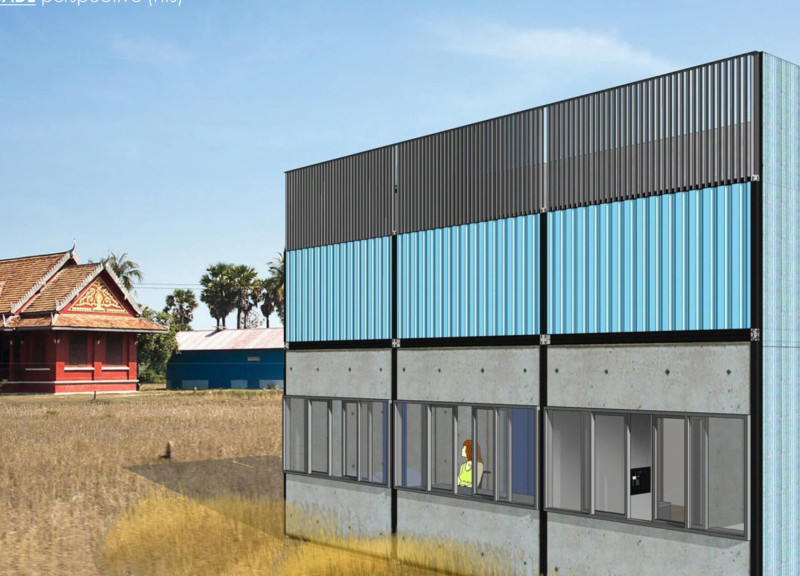5 key facts about this project
Modular Configuration and Functionality
The iBU is structured around a modular layout, enabling families to expand their living spaces over time. The design employs aerated lightweight concrete (ALC) panels for the primary structure, ensuring both durability and insulation. Steel cladding on the façade enhances the aesthetic appeal while providing weather resistance. Concrete elements are integrated into the foundation, offering stability that is crucial for the local climate, which can include heavy rains and flooding. Large glass windows promote natural light and foster a connection with the surrounding environment, emphasizing the integration of indoor and outdoor spaces.
Unique Design Features
The iBU distinguishes itself through several design innovations. One notable aspect is the vertical platform lift (VPL), which enhances accessibility within the home, making it inclusive for individuals with mobility challenges. Additionally, the architectural design incorporates planter boxes to support gardening and promote community engagement with local agricultural practices. The use of solar photovoltaic cladding allows the structure to harness solar energy, reducing dependency on external power sources and promoting sustainability.
Community-Centric Approaches
The design of the iBU promotes community cohesion by encouraging interaction among residents while maintaining personal privacy. Each module is organized to create communal spaces without compromising individual areas. This thoughtful spatial arrangement supports a sense of belonging, critical in rural settings. Moreover, sustainable practices are woven into the project, as each unit not only serves as a home but also engages occupants in ecological initiatives such as water conservation through rainwater harvesting.
For a comprehensive understanding of the architectural elements, including architectural plans, architectural sections, architectural designs, and architectural ideas, interested readers are encouraged to explore the project's presentation further. This exploration will provide deeper insights into the innovative design approaches and functional aspects of the iBU.























